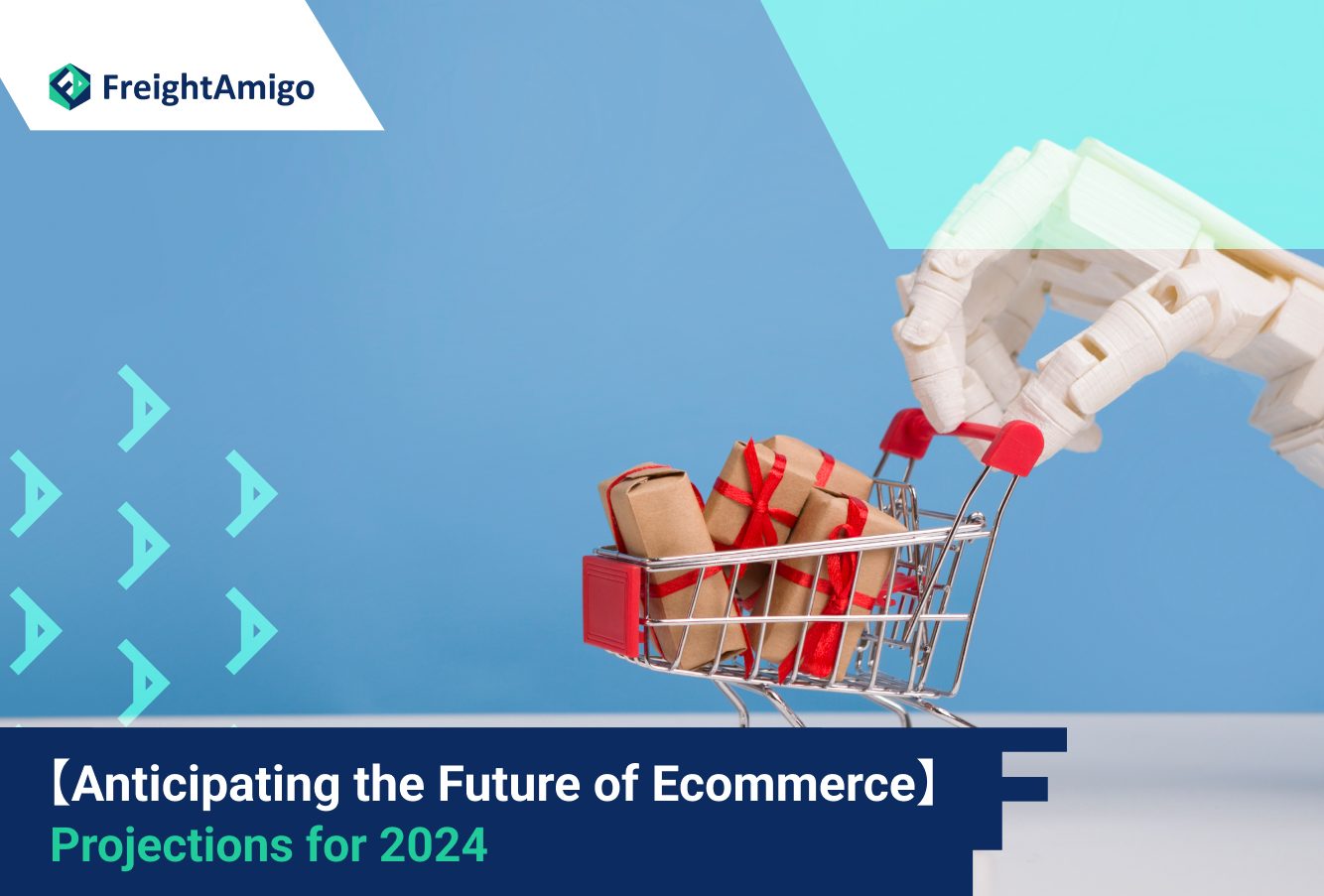【Anticipating the Future of Ecommerce】 Projections for 2025
February 18th, 2025: Maya Wong – Marketing Analyst at FreightAmigo
With the rapid development of technology and changes in consumer behavior, the global e-commerce market is undergoing unprecedented transformation. Looking ahead to 2025, we expect e-commerce to continue its robust growth, bringing more opportunities and challenges for businesses and consumers. This article will delve into the prospects of global e-commerce in 2025 and analyze its impact on the logistics industry.
Want To Compare The Best Express, Air Freight, Sea Freight, Rail Freight & Trucking Rates So As To Have Better Control On Cost?
Global E-commerce Market Size Forecast for 2025
According to predictions from multiple market research institutions, the global e-commerce market size is expected to exceed $7 trillion by 2025. Behind this staggering figure lies a fundamental shift in consumer shopping habits and accelerated digital transformation. Here are some key data points:
- Global e-commerce retail sales are expected to account for 24.5% of total retail sales in 2025
- Mobile commerce (M-commerce) will account for 72.9% of e-commerce transactions
- Cross-border e-commerce is expected to grow at an annual rate of 27%
Key Factors Driving E-commerce Growth in 2025
1. Rapid Growth in Emerging Markets
By 2025, emerging markets are expected to be the main drivers of global e-commerce growth. The rapidly expanding middle class in regions such as India, Southeast Asia, and Latin America, coupled with increased internet penetration, will bring enormous growth potential for e-commerce.
2. Application of Artificial Intelligence and Big Data
AI and big data technologies will play crucial roles in personalized recommendations, inventory management, and customer service. The application of these technologies will help e-commerce platforms provide more precise user experiences and improve operational efficiency.
3. Rise of Social Commerce
Social media platforms are gradually transforming into important shopping channels. By 2025, social commerce is expected to account for 10-15% of global e-commerce sales. This trend will provide brands with more opportunities to interact directly with consumers.
4. Sustainable Development and Environmental Awareness
Consumer focus on environmental protection and sustainable development continues to increase. By 2025, more e-commerce platforms and brands are expected to adopt eco-friendly packaging and carbon-neutral delivery measures to meet consumer demands.
Challenges Facing E-commerce in 2025
1. Logistics and Supply Chain Pressure
With the rapid growth of e-commerce, pressure on logistics and supply chains will also increase. Ensuring fast and accurate delivery while controlling costs will be a significant challenge.
2. Data Security and Privacy Protection
As the importance of data in e-commerce continues to rise, ensuring user data security and privacy protection will become a major challenge for businesses. Stricter global data protection regulations are expected to be introduced by 2025.
3. Complexity of Cross-border E-commerce
Despite the rapid growth of cross-border e-commerce, the complexities of international logistics, customs clearance, and tax policies remain major challenges for businesses.
How FreightAmigo Helps Businesses Address E-commerce Challenges in 2025
Facing the opportunities and challenges of global e-commerce in 2025, we at FreightAmigo are committed to providing comprehensive digital supply chain solutions for businesses:
1. Intelligent Logistics Management
Our platform integrates artificial intelligence and big data technologies to help businesses optimize logistics routes, improve delivery efficiency, and reduce costs. Through real-time tracking and predictive analytics, we can help businesses better cope with supply chain pressures.
2. One-stop Cross-border E-commerce Solution
We provide one-stop services from quote comparison and online booking to customs clearance, helping businesses easily navigate the complexities of cross-border e-commerce. Our platform connects to over 1,000 renowned airlines and shipping companies, ensuring businesses can find the most cost-effective transportation options.
3. Green Logistics Support
To respond to the growing demand for environmental protection, our platform integrates GreenTech technology to help businesses achieve more environmentally friendly logistics operations, including carbon emission calculation and optimization.
4. Digital Document Management
Our automated document system helps businesses simplify cross-border trade processes, improving efficiency while reducing the risk of errors.
Conclusion
The global e-commerce market in 2025 will be full of opportunities and challenges. Businesses need to actively embrace new technologies, optimize supply chain management, and provide excellent customer experiences to stand out in the competitive market. As a one-stop digital supply chain financial platform, FreightAmigo will continue to innovate and provide comprehensive logistics solutions for businesses, helping them ride the e-commerce wave in 2025 and achieve sustainable growth.
There Are Different Options For Cargo Transportation. If You Want To Choose The Most Convenient And Suitable Solution, It Is Best To Have The Full Support Of Logistics Experts! If You Are Planning To Ship Goods Overseas, Please Go To The FreightAmigo Page For Inquiries.
===
Read More:
【Import and Export Insights for 2024】 Exploring New Opportunities in Emerging Markets
【Crucial Insights】 Unveiling the Significance of Transit Time in Shipping Dynamics
===
If you have any inquiries on logistics/supply chain, feel free to contact FreightAmigo now:
Phone : +852 28121686
WhatsApp: +852 27467829









































